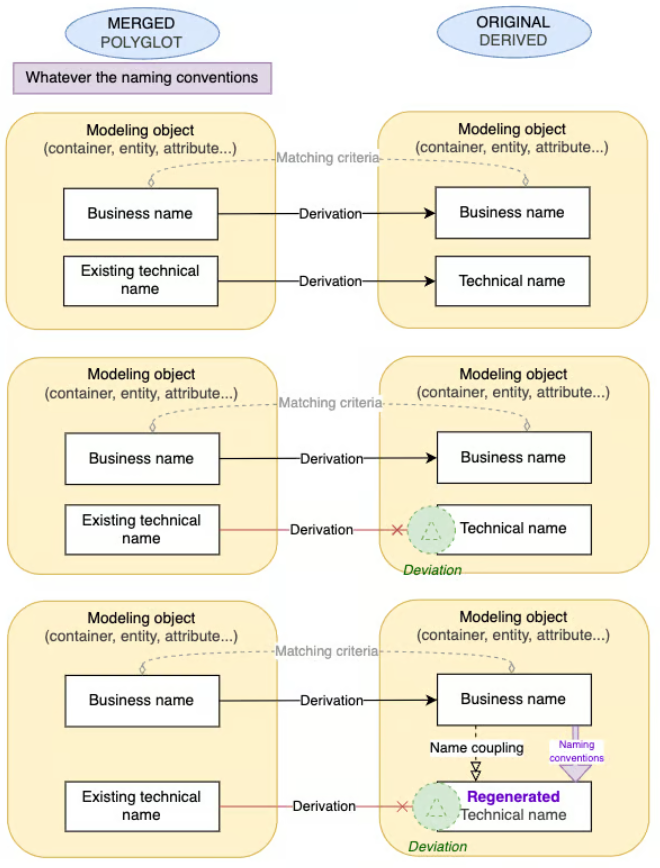Handling technical names during convert and merge to an existing Polyglot
When converting a model into an existing Polyglot with "merge” strategy (and not overwrite), any technical names already present in that Polyglot are preserved. To determine which existing Polyglot modeling object corresponds to which original modeling object, the matching is performed exclusively on the business name.
If the user chooses to make the models dependent, the original model becomes a derived model of the Polyglot. Let's illustrate the case.
Initial situation before the convert and merge

After the convert and merge

If the original modeling object had no technical name, the technical name from the existing Polyglot is propagated into the derived model. This is the expected behavior when the Polyglot should drive technical naming.
If the original object already had a technical name, its technical name is preserved as-is, but it becomes a deviation, since it no longer matches the technical name inherited from the Polyglot. This deviation behaves like any other overridden property in a derived model.
The coupling - if any - is preserved. The technical name may be regenerated based on the physical model’s naming conventions, but it still becomes a deviation if the resulting value differs from the Polyglot’s technical name.
Important note: if the Polyglot already contains technical names, merging it with a physical model will naturally introduce deviations for any object in the physical model that already had its own technical name. If the goal is for the Polyglot to fully control technical names after the merge, technical names must be cleaned from the physical model before running the convert & merge, as described in this page. If the intent is to keep the physical model’s specific naming, simply leave the technical names in place -- they will be preserved as deviations.